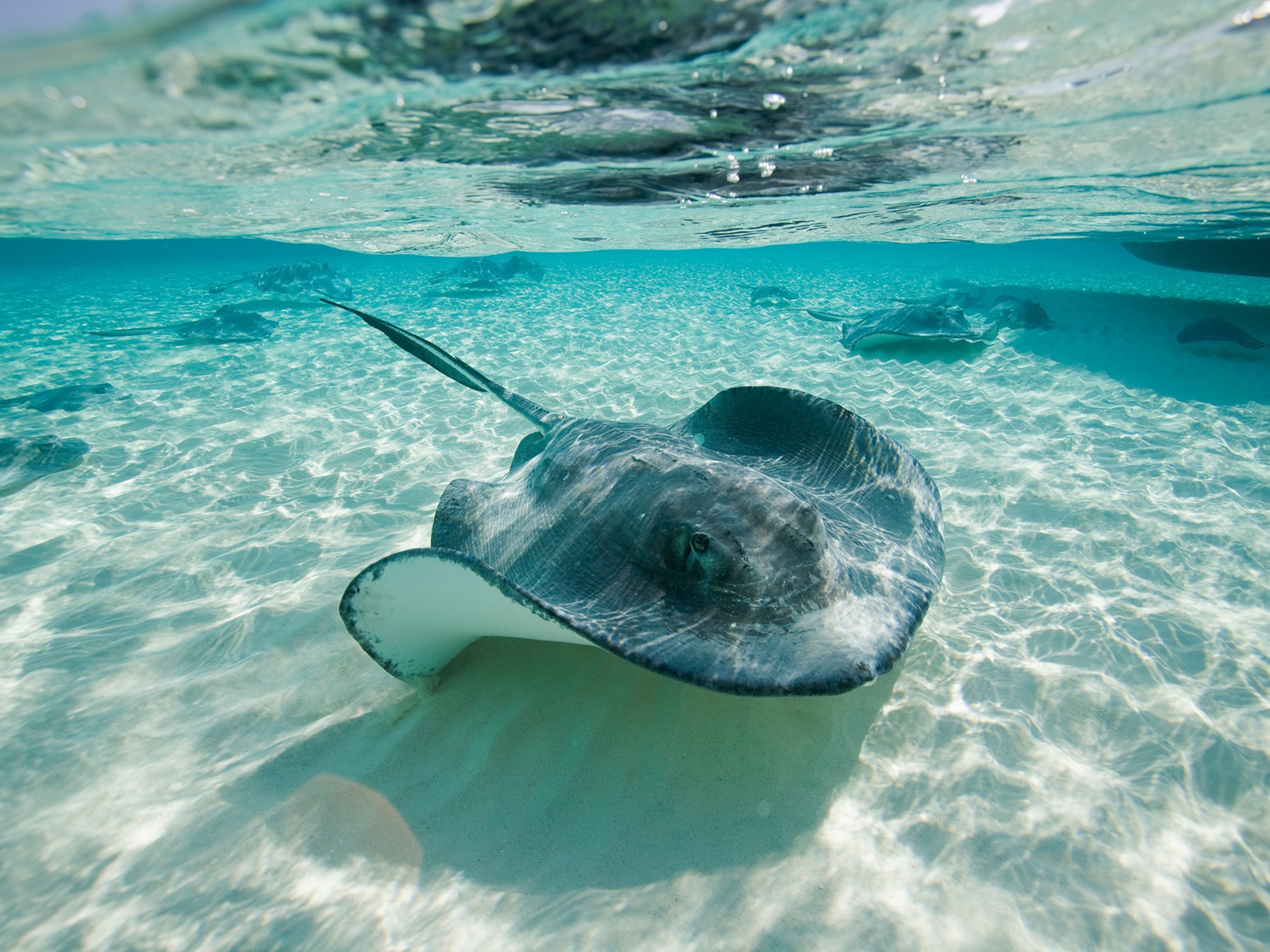The ocean's largest, rarest stingray revealed in new video
The smalleye stingray, which has a sharp barb and tiny eyes, makes the longest known migration of any animal in its family.
The smalleye stingray is a study in contrasts and surprise. It has a wingspan that stretches greater than seven feet, yet its eyes are the size of raisins. While most stingrays avoid humans, the smalleye appears to be inquisitive, sometimes swimming within feet of scuba divers. And despite being the world’s largest oceanic stingray, it is very rarely spotted alive, and almost nothing is known about it.
Before the early 2000s, there were only a couple verified live sightings of smalleye stingrays (Megatrygon microps). But in the past 15 years, biologist Andrea Marshall and colleagues have spotted 70 individuals off the coast of Mozambique, and they’ve catalogued some of these observations in the world’s first study on the animals, published this month in the journal PeerJ.
The paper shows that these rays can be identified individually by the unique spot pattern that each has on its back, which will allow researchers to use photos and videos taken by citizen scientists around the world to track where specific animals travel and what they do. It also provides more evidence that the coast of Mozambique is biologically unique, and worthy of protection.
“As a shark and ray biologist, this thing is just blowing my mind, it’s so weird,” says Marshall, a National Geographic explorer, and founder and principal scientist with the California-based Marine Megafauna Foundation, an independent research and advocacy organization that has a research center in Mozambique.
One animal, for example, was spotted in Tofo Beach, in southern Mozambique, and then again off the Bazaruto archipelago, nearly 150 miles to the north. It then swam back to Tofo, in an apparent migratory trek much longer than that observed before in any stingray, Marshall says. The animal, a female, was pregnant when first seen and later was not, suggesting it possibly traveled north to give birth.
Southern Mozambique is a global hotspot for shark and ray diversity, and it has a seemingly higher abundance of these animals than other parts of the western Indian Ocean, says Rhett Bennett, a conservation officer with the nonprofit Wildlife Conservation Society, who wasn’t involved in the paper. “This study contributes new information in support of that hotspot,” he says, which is “an important area for conservation.” Some swathes of this region are protected, including Bazaruto Archipelago National Park, but others are not.
The paper is a first compilation of observations that could be used to aid in the animal’s protection. Currently smalleye stingrays are considered data deficient by the International Union for Conservation of Nature, which sets the conservation status of wildlife. But Marshall expects they’re likely endangered because they’ve been so hard to find, though they’re occasionally accidentally caught by fishers. Observations also show they only have one pup at a time and take many years to reproduce.
Smalleye stingrays typically hang out in the middle of the ocean column. Most other stingrays tend to stay near the seafloor, which they use to push against if they need to use their stingers, which are tipped by venomous barbs.
The barbs of Megatrygon microps are large, and the rays have strong muscles girdling their tail. Combined with the fact that they don’t stay by the seafloor, these observations suggest the animals are likely able to deploy their stingers in mid-water, which other stingrays generally don’t do, Marshall says.
And yet, they appear to be quite gentle and curious, almost like manta rays, Marshall says. (Related: Inside the world of manta rays.)
“That’s the opposite of most stingrays,” Marshall says. “When they see you, they usually speed away.”





